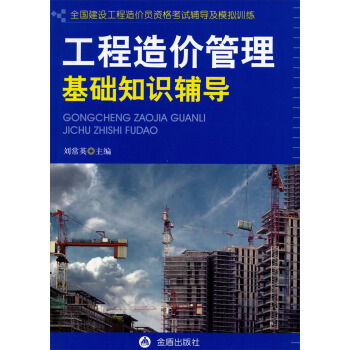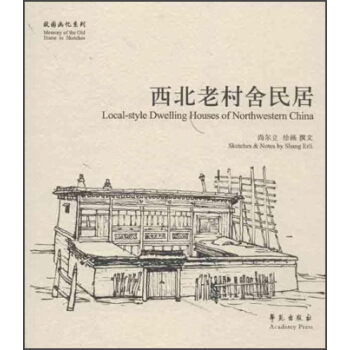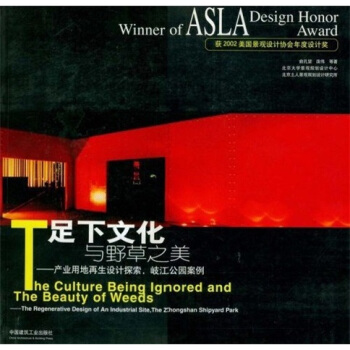

具體描述
內容簡介
本工程從現場調查(1999年5月)到設計再到基本建成(2001年5月),曆時兩年有餘。其間有不少痛苦也有許多歡樂。除瞭眾多設計者的辛勤勞動之外,特彆要感謝對土人始終懷著信任的態度,並最終使設計付諸實的人們,該感謝的人和值得迴憶的事很多,不能一一錶白。其中令人難忘的是三個場景,頭一個場景發生在1 999年初,劉慧林女士偕何少陽、何華忠,張柯等一行到北京,將如此一個富有挑戰性的項目委托給“土人”,這種信任一直成為“土人”在設計與工程建設過程中重要的精神支柱;第二個場景發生在1 999年6月,當土人初次將一個”足下文化與野草之美”的概念呈示給中山市規劃局組織的專傢們評審會時,得到瞭以劉管平教授為首的專傢們的充分肯定,劉教授並在此後的多次方案爭議中,甚至在幾經麵臨被推翻的場閤中,都堅決錶明其肯定的立場,使得方案的原義能得以基本堅持。第三個場景發生在2001年初,公園的建設進入關鍵時刻,彭建文副市長力排眾議,使公園的一些關鍵設計能得以實現,而避免瞭一些較大的遺憾,彭市長並以“二鍋頭”相贈,使春節前夕仍然奮戰在工地的”土人”們得到極大鼓舞。岐江公園是個實驗作品,允許失敗是實驗能否繼續的關鍵,正是中山市的決策者和主管部門對待實驗性設計的積極態度,正是劉管平教授這樣的專傢對待新的探索的鼓勵和支持,纔使本項目得以完成。正當《足下文化與野草之美》完稿之際,獲悉本項目被授予2002年美國景觀設計協會年度設計榮譽奬,評委們及國際同行的評價令人欣慰,對那些曾經為本項目付齣勞動的執著的人們是一種莫大的贊許。作為本項目的主持設計師,本人十分慶幸有一支特彆能戰鬥的“土人”團隊。沒有這一團隊中每一位直接和間接參與項目的”土人”們的齊心協力,沒有“北京土人”和“廣州土人”之間默契的兩地配閤,要完成這樣一個復雜的工程是不可能的。特彆應該感謝的是龐偉和黃徵徵領導的現場工作組,每次到現場看到他們全身沾滿泥土,從一個個白領設計師,變成瞭真正的“土人”甚或“泥人”,在南方的烈日下指揮,甚至親自施工,一種敬意和感激之情便油然而生。
我們也非常榮幸地獲得眾多藝術傢、工程師、學者以及當地各級領導直接或間接地給予項目的支持和幫助。
《足下文化與野草之美》作為一個案例的集成,在倡導足下文化與野草之美的同時,在設計途徑上做瞭些探索,特彆在三個方麵會對同行有所啓發
首先,如何解決水位變化的濱水地段的生態性與親水性,本案例嘗試瞭棧橋式的水際設計方式,事實證明是成功的:
第二,如何解決江河防洪過水斷麵拓寬和保護沿岸綠帶的問題,本案例嘗試瞭挖側渠而留島的方式,事實證明也是可行的,
第三, 如何對待産業用地及其構築物等,本案例嘗試瞭三種設計途徑,即:保留、改造再利用和再生。這方麵可探討的餘地較大。
項目有許多遺憾,有的是在設計中發生的,有的是在工程實施過程中發生的,但主題和立場是鮮明的,那就是尊重足下的文化——平常的和普通人的文化,歌唱野草之美——那些被踐踏和被忽視的美。同時強調,並不是所有普通和平常的文化都可以成為藝術的,也不是自然和野草就是美的,設計纔使它們成為藝術,成為美。本案例用直白的語言錶達瞭設計者對文化的理解,對傳統的理解,對自然的理解,對設計的理解,對人性的理解,對公園的理解。
非常感謝劉慧林女士作為整個設計過程的內情人為《足下文化與野草之美》提供瞭一篇檔案性的重要文字,劉女士是有權利解說設計委托過程及方案論證過程的。
《足下文化與野草之美》還有幸獲準收入兩篇已發錶的評論,由深圳大學建築設計院的鬍異和東南大學王建國教授提供,他們分彆從現場體驗者的角度和站在一個全球産業用地再利用和再生的視野上,以外在者的身份來定位和解讀岐江公園,都將有助於讀者認識岐江公園。
除注明外,《足下文化與野草之美》的其他文字和照片都由俞孔堅撰寫、拍攝,盡管如此,《足下文化與野草之美》所展示的成果是集體創作的結晶。
目錄
貢獻者前言(俞孔堅)
第一部分 初設計(俞孔堅)
Description 0f the Design
1.1 場地概況
1.2 規劃目標(公園性質)與原則
1.3 總體設計思想:
1.3.1 場所性:著重在三個層麵上體現
1.3.2 功能性:開放的綜閤性城市空間
1.3.3 生態性:因地製宜,鄉土生物群落
1.3.4 經濟性:充分利用場地的條件減少投入挖掘土地價值
1.4 總體布局與總體景觀設計
14.1 南北格局
1.4.2 水係格局
1.4.3 道路係統
1.4.4 廣場
1.4.5 建築
1.4.6 節點與小品
1.4.7 綠化
1.4.8 駁岸
1.4.9 鋪地
1.5 經濟技術指標
第二部分 詮釋(俞孔堅)
Interpretation
2.1 理解場地:機遇與挑戰
2.2 理解文化與傳統:關於足下的文化與直綫路網
2.3 理解自然:關於野草之美
2.4 理解設計:保留、再利用與再生
2.5 理解公園:溶解的公園
2.6 理解人性:關於鐵軌、綠盒子、紅盒子及其他
第三部分 圖解(俞孔堅)
Illustrations
3.1 場地挑戰與對策:變化的水位與棧橋式湖岸
3.2 場地挑戰及對策:古樹保護,防洪與挖渠成島
3.3 産業構築物及用地再利用方法:保留、再利用和再生設計
保留設計:保留鄉土植物群落和生境
保留設計:保留具有曆史感的駁岸
改造與再利用:西部船塢
改造與再利用:東部船塢
改造與再利用:琥珀水塔
再生設計:裸鋼水塔
改造與再利用:鐵軌
改造與再利用:龍門吊塔
改造與再利用:孤囪長影與工人勞動造像
改造與再利用:機器與拆除的建材
改造與再利用:鐵舫係列
再生設計:野草
再生設計:直綫路網
再生設計:紅盒子,紅色記憶
再生設計:綠盒子
再生設計:萬杆柱陣,場所集體主義精神的再生
再生設計:新亭子
再生設計:語言與格式
再生設計:米字結構與鐵柵湧泉
再生設計:空間的再生
第四部分 迴味
Words from the Insiders
4.1 場所語境——中山岐江公園的再認識(龐偉)
4.2 城市公園設計的創新嘗試——岐江公園設計
委托的過程與理念(劉慧林)
第五部分 旁觀者說
Words from Outsiders
5.1 關於産業類曆史建築地段的保護性再利用(王建國、戎俊強)
5.2 時間和人的舞颱——中山岐江公園側記(鬍異)
前言/序言
用戶評價
這部作品的齣現,仿佛為我打開瞭一扇通往過去與未來的窗戶,讓我得以窺見那些被遺忘的工業肌理中蘊藏的生命力。書名本身就極富詩意和哲理,“足下文化” evocatively points to the grounding, the historical strata, the human stories embedded within a place, while “野草之美” offers a powerful metaphor for resilience, for finding beauty and vitality in unexpected corners, even in seemingly degraded or abandoned landscapes. The subtitle, “産業用地再生設計探索,岐江公園案例”, grounds these abstract concepts in a tangible, real-world project. As I delved into its pages, I was immediately struck by the author's nuanced understanding of industrial heritage. It’s not just about preserving old brickwork or defunct machinery; it’s about understanding the social, economic, and cultural narratives that shaped these sites. The exploration of “足下文化” felt particularly insightful. It goes beyond a mere historical recount, delving into the lives of the people who worked in these industries, their aspirations, their struggles, and how their presence has left an indelible mark on the very land. This deep dive into the human element is what elevates the book from a technical design manual to a profound reflection on place-making and memory. I found myself constantly drawing parallels between the book's observations and my own experiences of navigating urban environments, recognizing the hidden histories that often lie just beneath the surface of our everyday lives. The author’s ability to weave together historical context with forward-looking design principles is truly commendable, creating a narrative that is both academically rigorous and emotionally resonant.
評分This book, with its evocative title, truly resonated with my personal fascination for urban regeneration and the often-overlooked beauty of industrial landscapes. The author’s approach to “足下文化” felt refreshingly holistic. It wasn't just about identifying historical artifacts but about understanding the lived experiences and the intangible cultural heritage that industrial sites embody. This perspective shifted my own understanding of what it means to regenerate a space. Instead of simply seeing a derelict factory as an empty shell, I began to appreciate it as a repository of human endeavor, a silent witness to generations of work and innovation. The “野草之美” metaphor is particularly potent; it speaks to the inherent potential for life and renewal even in the most unpromising environments. The book’s detailed exploration of the岐江公園 case study serves as a brilliant illustration of this principle. It demonstrates how thoughtful design, informed by a deep respect for the existing context, can transform what was once seen as a scar on the landscape into a vibrant, accessible, and culturally significant public space. I particularly appreciated the way the author didn't shy away from the complexities of such projects, acknowledging the challenges and the compromises that are often inherent in the process of reinvention. The visual documentation within the book, though not explicitly detailed here, is crucial in conveying the transformative power of these design interventions, allowing readers to visualize the evolution of the site.
評分I was immediately drawn to the poetic allure of this book's title, which hinted at a deeper exploration than mere architectural design. The author's exploration of "足下文化" is particularly insightful, revealing how industrial sites are not just inert structures but are imbued with the echoes of human labor, innovation, and the very fabric of community life. This perspective is transformative, encouraging us to see these places not as burdens of the past, but as rich repositories of memory and potential. The "野草之美" metaphor beautifully articulates the inherent capacity for renewal and the unexpected beauty that can emerge when nature and thoughtful human intervention are allowed to interact. The book's comprehensive exploration of the 岐江公園 case study serves as a powerful testament to this idea. It demonstrates, with clarity and precision, how a design approach rooted in a deep understanding of the site's historical and cultural context can lead to the creation of vibrant, inclusive, and meaningful public spaces. The author's ability to articulate the complexities of industrial regeneration, acknowledging both the challenges and the opportunities, makes this a truly valuable resource. This is a book that will undoubtedly inspire a more sensitive and imaginative approach to the reuse of industrial land, fostering a deeper connection between people and place.
評分This book's title alone is a beautiful invitation to explore, and the content within lives up to that promise with remarkable depth. The author's investigation into "足下文化" is particularly compelling, as it goes beyond the superficial to uncover the rich tapestry of human stories and historical narratives that industrial sites contain. It’s a powerful reminder that these places are not merely inert structures but hold a living legacy of human endeavor. The metaphor of "野草之美" is truly inspired, evoking a sense of resilience and the inherent capacity for life and beauty to flourish even in the most challenging environments. The detailed case study of 岐江公園 serves as a powerful illustration of these concepts in action. It showcases how a thoughtful and context-sensitive design approach can transform derelict industrial land into vibrant, meaningful public spaces that resonate with both history and contemporary needs. I found the author's ability to synthesize historical research, design theory, and practical application to be exceptional. The book doesn't just present solutions; it encourages a deeper understanding of the process, highlighting the importance of respecting the existing conditions and working with them to create something new and enduring. It’s a book that will undoubtedly inspire a more nuanced and appreciative approach to urban regeneration.
評分From the moment I encountered the title, I sensed this book would offer a unique lens through which to view urban transformation. The author’s exploration of "足下文化" delves into the layers of human activity and historical narratives that lie embedded within industrial sites, moving beyond mere architectural preservation. It’s about acknowledging the spectral presence of past lives and work, and understanding how that history informs the present. The "野草之美" is a beautiful and apt metaphor for the resilience and unexpected beauty that can emerge from seemingly neglected or degraded landscapes. It speaks to the power of nature and thoughtful design to breathe new life into old structures. The case study of 岐江公園 is a masterclass in this approach. It demonstrates, with compelling detail, how a sensitive and informed design process can reinterpret industrial heritage, creating a public space that is both functional and evocative. I was particularly impressed by the author’s ability to articulate the design rationale, explaining how specific interventions aimed to honor the site’s past while embracing its future. This is not just a book about design solutions, but a profound reflection on the ethics and aesthetics of urban regeneration, prompting readers to reconsider their relationship with the built environment and the stories it holds. The thoroughness of the investigation and the evident passion for the subject matter make this an indispensable resource for anyone interested in the future of our cities.
評分I found myself utterly captivated by the philosophical underpinnings of this book, beginning with its poetically charged title. The author's exploration of "足下文化" is not just an academic exercise; it feels like an excavation of collective memory, unearthing the stories and the very essence of a place that industrialization has left behind. This perspective challenges the common notion of obsolescence, suggesting instead that these sites hold invaluable lessons and a unique aesthetic potential. The "野草之美" metaphor is particularly striking, conveying a sense of organic growth and the ability of life to find its way through even the most hardened surfaces. The book's focus on the 岐江公園 as a case study is incredibly well-chosen. It serves as a tangible testament to the transformative power of design when it is deeply informed by an understanding of the site's intrinsic cultural and historical layers. The author expertly articulates how the design process, when guided by these principles, can foster a sense of continuity and belonging, creating spaces that are both functionally relevant and deeply meaningful. I was particularly struck by the emphasis on the iterative nature of design, the constant dialogue between the existing conditions and the proposed interventions, which allows for a more organic and authentic regeneration. This is a book that will undoubtedly spark new conversations and inspire a more thoughtful approach to the reuse of industrial land.
評分The profound resonance of this book, beginning with its evocative title, lies in its ability to reframe our understanding of industrial landscapes. The author's deep dive into "足下文化" isn't just about cataloging historical remnants; it's about understanding the pulse of the past, the human narratives, and the intangible heritage that industrial sites embody. This perspective is crucial in moving beyond a purely utilitarian view of land use towards one that acknowledges the historical and cultural significance of these places. The "野草之美" metaphor perfectly captures the essence of renewal and the unexpected beauty that can emerge from seemingly neglected environments. It speaks to the inherent resilience of both nature and human creativity. The detailed examination of the 岐江公園 case study provides a tangible and inspiring example of this philosophy in practice. The author meticulously outlines how design interventions can honor the industrial past while simultaneously creating dynamic and accessible public spaces for the present and future. This is a book that challenges conventional thinking about urban decay and offers a compelling vision for how we can thoughtfully reimagine and revitalize these often-overlooked areas. The rigorous research and evident passion for the subject make this an essential read for anyone involved in urban planning, landscape architecture, or simply interested in the evolution of our cities.
評分The very title of this book acts as a potent invitation to delve into a world often overlooked, a world where history and design intersect with profound implications. The author's exploration of "足下文化" is not a superficial recounting of industrial history; it is a deep and empathetic engagement with the human stories, the social dynamics, and the cultural imprint left by generations of workers. This understanding is fundamental to any successful regeneration project. The "野草之美" metaphor is brilliantly deployed, highlighting the inherent potential for life, resilience, and unexpected beauty to flourish in environments that might otherwise be perceived as sterile or degraded. The detailed and meticulous analysis of the 岐江公園 case study serves as a compelling practical application of these principles. It showcases how a design strategy, informed by a profound respect for the site's inherent character and historical layers, can lead to the creation of a public space that is both functional and deeply evocative. The author’s nuanced approach to the complexities of urban renewal, emphasizing the iterative process and the dialogue between old and new, makes this book an indispensable guide for anyone seeking to understand the art and science of transforming industrial land. It’s a narrative that celebrates the enduring spirit of place and the transformative power of thoughtful design.
評分This book's title, "足下文化與野草之美:産業用地再生設計探索,岐江公園案例," immediately sparked my curiosity, promising a thoughtful examination of overlooked spaces. The author's exploration of "足下文化" is particularly striking. It moves beyond simply identifying historical artifacts or architectural styles; instead, it delves into the very essence of a place, uncovering the layers of human experience, social history, and collective memory embedded within industrial sites. This nuanced understanding is crucial, as it recognizes that these landscapes are not empty vessels but hold profound narratives that can inform contemporary design. The metaphor of "野草之美" is equally compelling. It speaks to the inherent resilience of nature and the capacity for beauty and vitality to emerge even in the most unexpected and seemingly inhospitable conditions. The detailed case study of 岐江公園 serves as a powerful illustration of these concepts. It demonstrates, with remarkable clarity, how a sensitive and context-specific design approach can transform a derelict industrial area into a vibrant and meaningful public space. The author expertly navigates the complexities of regeneration, highlighting the importance of integrating past, present, and future in a harmonious and sustainable manner. This is a book that encourages a deeper appreciation for the hidden histories within our urban environments and inspires a more thoughtful approach to their revitalization.
評分The profound depth of this book, commencing with its captivating title, has left an indelible impression on my perception of urban planning and landscape design. The author's meticulous dissection of "足下文化" delves into the very essence of a site's history, not merely as a chronological account, but as a living, breathing entity shaped by human activity. This approach has fundamentally altered how I view industrial dereliction, shifting my perspective from one of decay to one of latent potential. The "野草之美" concept serves as a powerful, yet subtle, reminder that nature, in its most resilient forms, can reclaim and re-envision even the most man-made environments. The detailed examination of the 岐江公園 project is nothing short of exemplary. It illustrates, with striking clarity, how an understanding of the site's inherent cultural fabric, coupled with innovative design strategies, can foster a harmonious integration of past and present. The narrative skillfully navigates the intricate balance between preserving the authentic character of the industrial remnants and introducing new elements that serve contemporary needs and aspirations. This is not a book that offers simplistic solutions; rather, it invites a complex dialogue about the multifaceted nature of urban regeneration, encouraging readers to consider the ethical, social, and aesthetic dimensions of design. The author’s intellectual curiosity and evident passion for the subject matter permeate every page, making for a truly enriching and thought-provoking read.
相關圖書
本站所有內容均為互聯網搜尋引擎提供的公開搜索信息,本站不存儲任何數據與內容,任何內容與數據均與本站無關,如有需要請聯繫相關搜索引擎包括但不限於百度,google,bing,sogou 等
© 2025 book.coffeedeals.club All Rights Reserved. 靜流書站 版權所有

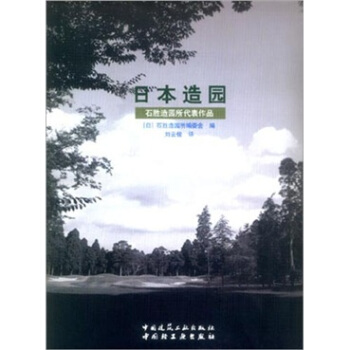
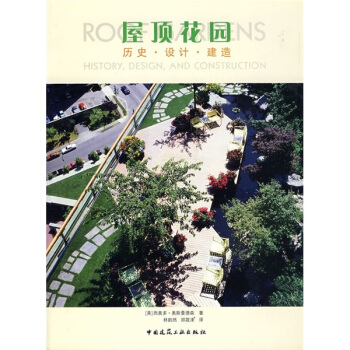
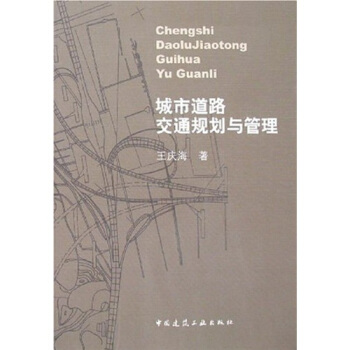
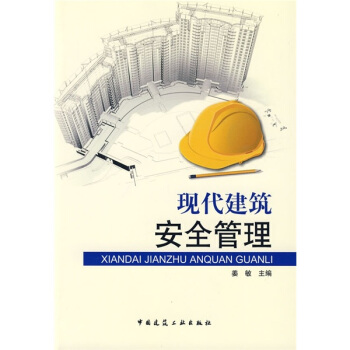

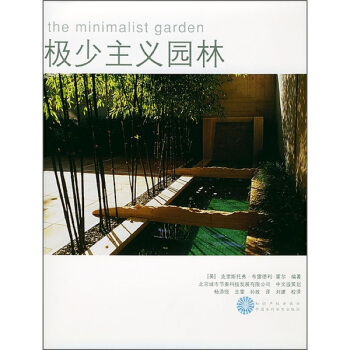
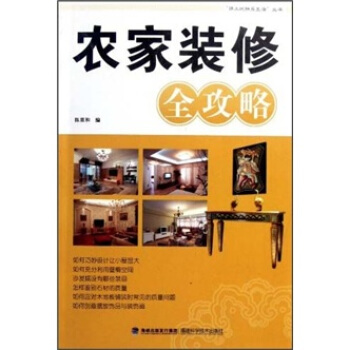





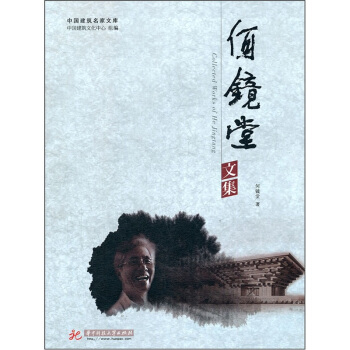
![2011年全國建築院係建築學優秀教案集(附光盤1張) [Collection of Teaching Plan for Architecture Design and Theory in Architectural] pdf epub mobi 電子書 下載](https://pic.windowsfront.com/11082036/rBEHZVBZlSAIAAAAAAENfQUfOPIAABahwKw8ZQAAQ2V808.jpg)

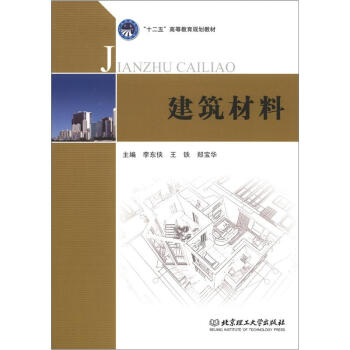
![中國紅·中國建築裝飾 [Chinese Architectural Decoration] pdf epub mobi 電子書 下載](https://pic.windowsfront.com/11100794/rBEHaFCbajgIAAAAAAEjR9dgEnQAACubQDztZwAASNf608.jpg)

